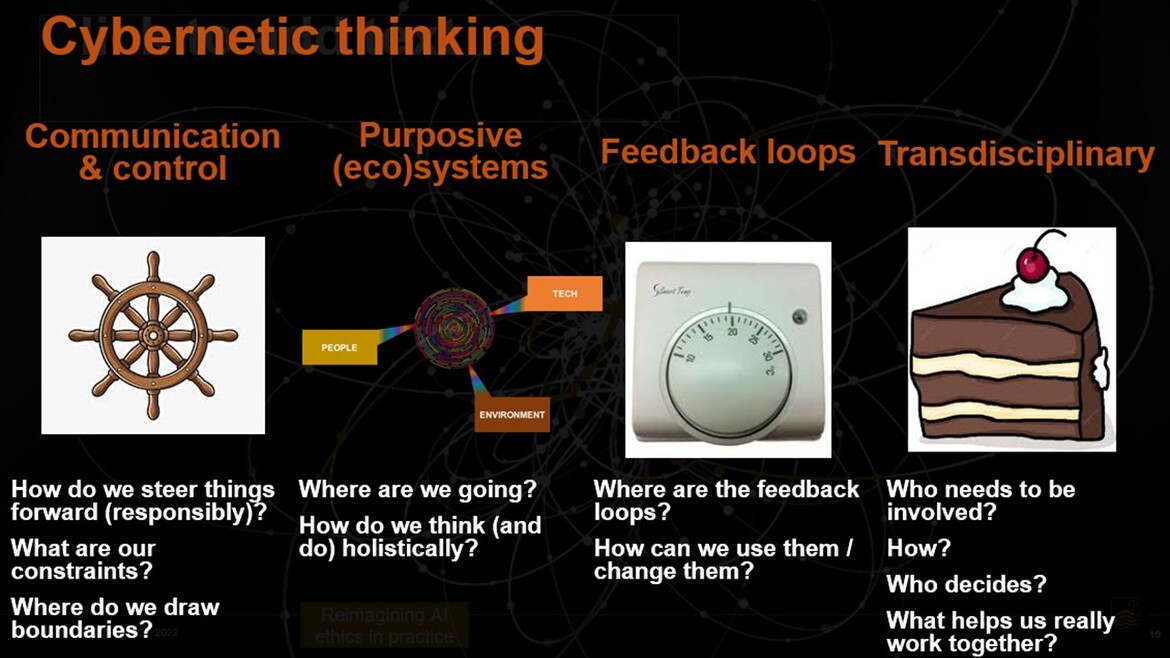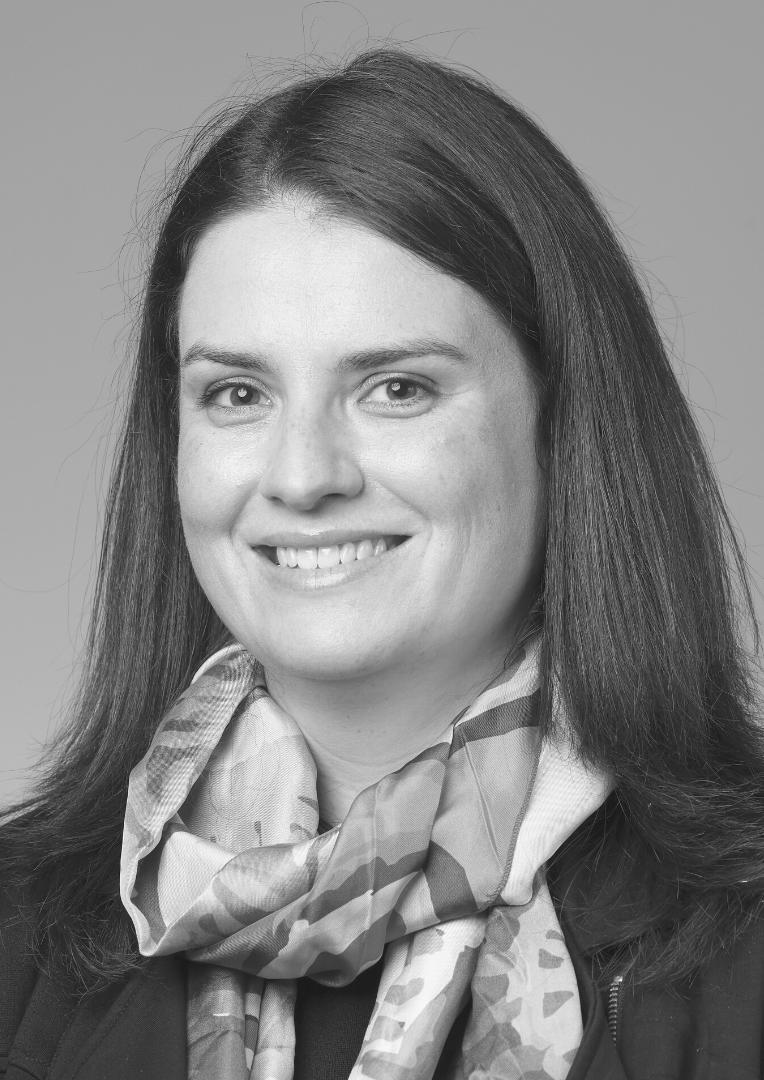At the School of Cybernetics, we talk a lot about translating across boundaries, whether it be across disciplines, sectors, cultures and more. In August, I had the opportunity to do just that when I was invited to participate in the Desert Knowledge Research Institute’s ‘Desert Lab for Healthy Media’ workshop in beautiful Mpartntwe (Alice Springs).
The workshop was designed to explore technology from cultural, social and language perspectives and, in doing so, understand lessons from the regional pandemic emergency for the design of a responsive technology desert lab that meets future health and safety needs. Lab developer, Dr Lisa Stefanoff, asked me to present on a topic very aligned to my PhD: ‘Cybernetic thinking and centring dignity in responsible technology design’.
A diverse group of people attended the workshop in person and online - Indigenous elders, health workers, health communicators, community members, educators, linguists, computer scientists, anthropologists, technologists, researchers and many others. Uniting the group were experiences in developing and applying technology in Indigenous-language speaking desert communities.
An overview of what we heard#
The day began with a thoughtful Welcome to Country from Kumalie Kngwarraye Riley, Arrernte Elder, in English and Arrernte, and a welcome to Desert Knowledge Australia (DKA) and the Desert Knowledge Precinct (where the workshop was held) by CEO Jimmy Cocking.
Kumalie spoke about Arrernte knowledge systems grounded in kinship and country. Dr Stefanoff outlined where the Desert Lab project was originally incubated–the Humanitech Lab, an initiative of Australian Red Cross that supports organisations addressing social and humanitarian issues through technological innovation. Dr Stefanoff drew attention to the key precepts of ‘culturally appropriate technology design’ that guide work at the Desert Knowledge precinct’s ‘Centre for Appropriate Technology’ (CfAT) and that have underpinned development work on the Desert Lab idea to date. Then we heard from a variety of initiatives involving technology and languages that share a focus on Indigenous social justice and well-being in central and northern Australia.
Firstly, Dr Jane Davies and Cheryl Ross from the Menzies School for Health Research shared a bit about their journey to create health information videos in Indigenous languages during the vaccine roll-out, with communities from the desert to the ‘top end’ of the NT. We learned about the decisions made regarding what to share and how as well as the collaboration with Indigenous people to participate in the video in their own languages. They reflected on the need to prioritise time for honest conversations with Indigenous community members, the importance of trusted social infrastructure for the distribution of information as part of future pandemic preparedness and what is really needed for informed choice.
Zooming out, Professor Daniel Angus from QUT Digital Media Research Centre and Centre of Excellence for Automated Decision-Making and Society (ADM+S) gave an overview of research undertaken for the Desert Lab for Healthy Media project looking at the dynamics of both Aboriginal-controlled health organisations’ communications and anti-science social media that had impacted Northern Territory communities in 2020-21.
Focusing on practical insights into collaborative technology design for local community use, we also learned about two machine-learning projects using Indigenous languages - Wangka Kutju (Purple House Renal Dialysis group), a real-time voice-activated machine translation between English and Pintupi-Luritja language; and Indigemoji, the community creator of Australia’s first set of Indigenous emojis.
Amid these fascinating initiatives and insights, my session focused on framing some questions connected to what I’d heard, through the lenses of cybernetics and dignity.
Applying cybernetics and dignity to this context#
Whether or not all the group was aware of it, concepts common to cybernetics were commonly used throughout the day. For example, conversations around:
-
steering a project, initiative and the Healthy Media Lab forward (Cybernetics comes from the Greek Kybernetes which means to steer)
-
communication approaches and constraints (Cybernetics is commonly referred to as the science of communication and control)
- exploring an “ecology of Healthy Media” (connected to seeing in systems)
- being in reactive cycles during the pandemic (referencing feedback loops)
I introduced four concepts core to cybernetics into the conversation, namely that cybernetics is about:
-
Communication and control
-
Purposive (eco)systems
-
Feedback loops
-
Transdisciplinary practice and posed some questions associated with each concept as provocations for the unfolding conversation (see overview below).

I also introduced some concepts of dignity, which up until this point had not been a term overtly used in the day’s discussion but was underlying much of the discussion about ethical health practice throughout the workshop.
I spoke a bit about different ways to think of dignity that I’ve collated from my PhD research to date - as something we all have and that cannot be given or taken away, as an ability to choose, as a communal responsibility, as something that we can protect as well as promote and as comprising numerous elements including ‘giving the benefit of the doubt’.
Despite my best efforts and taking on sage advice from Dr. Judith Lovell (Batchelor Institute for Indigenous Tertiary Education - BIITE) on how to position my input, I was unsure what the group might find relevant. It was promising to see that different group members adopted some of the cybernetic and dignity concepts introduced in the conversation that ensued. Further, members reflected that injecting these frameworks into the discussion really assists in ‘taking the conversation up a level’ - beyond individual experiences, to a shared forum of communication and collaboration. I also reflected that dignity as a value aligns closely with self-determination as a primary framework for technology research and design which is Indigenous-controlled and Indigenous knowledge systems-led. And ‘Transdisciplinarity’, as I discussed it, is very aligned to how things operate in the space of culturally appropriate digital technology design practice.
A big thank you to Dr. Lisa Stefanoff for the invitation to contribute. This experience provoked various interesting questions for me and piqued some further lines of inquiry that I’ll continue to explore as my thesis continues.

